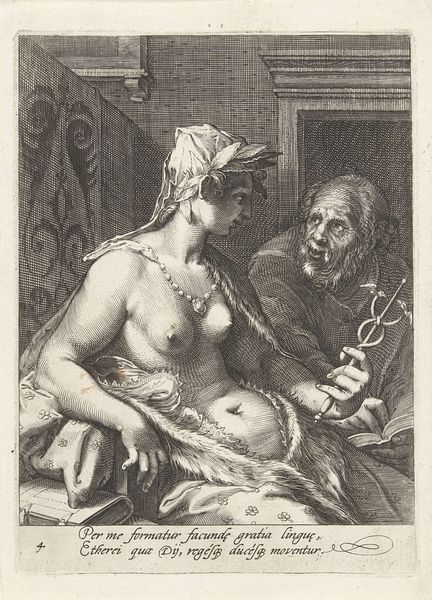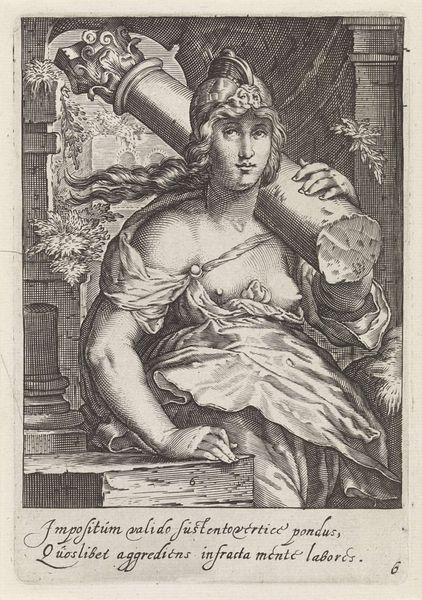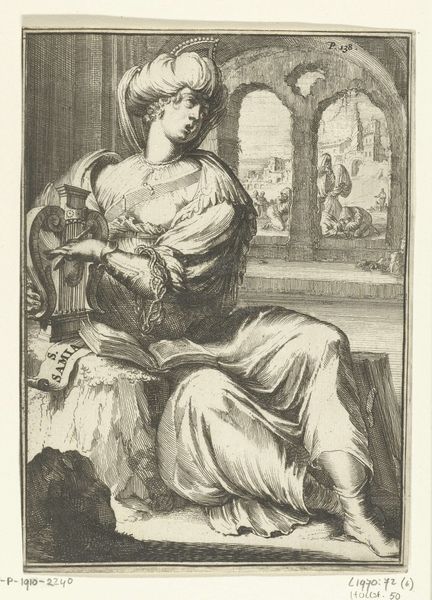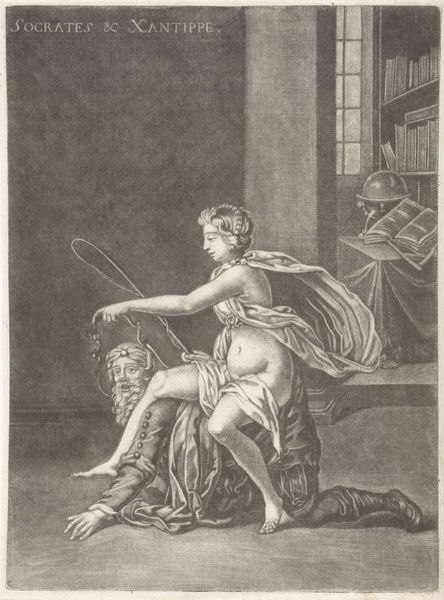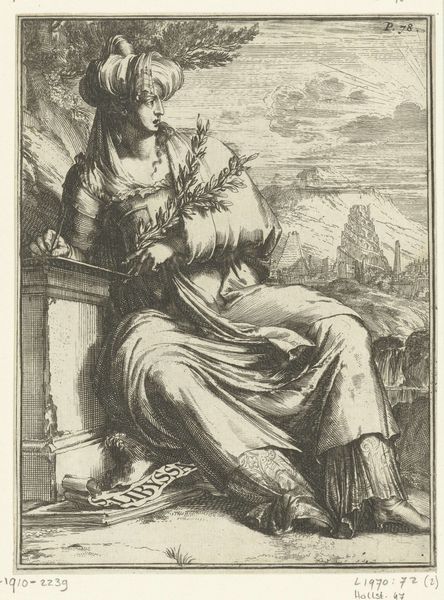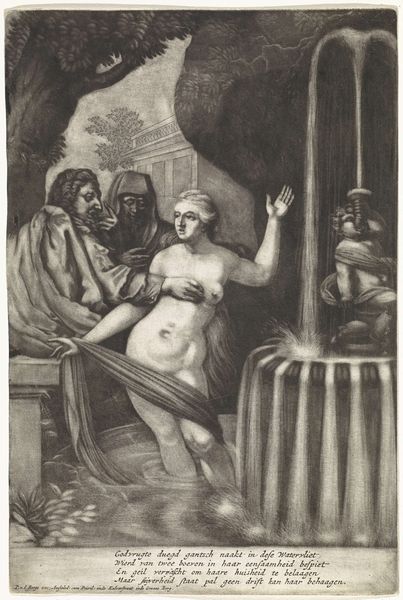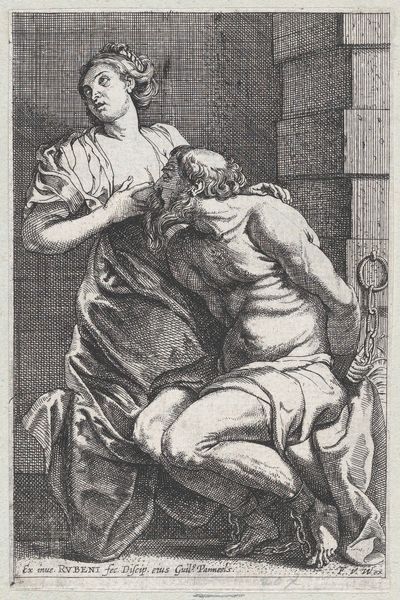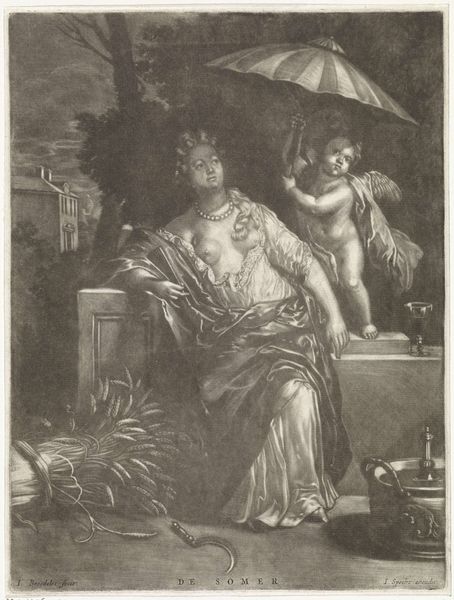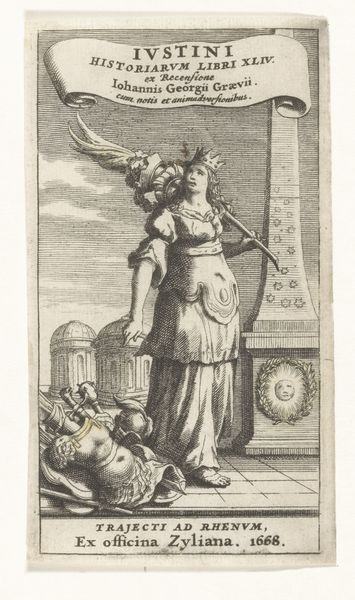
print, engraving
#
portrait
#
allegory
#
baroque
# print
#
old engraving style
#
11_renaissance
#
portrait reference
#
portrait drawing
#
history-painting
#
engraving
Dimensions: height 164 mm, width 128 mm
Copyright: Rijks Museum: Open Domain
Curator: My eye is immediately drawn to the intense detail achieved through the engraving. What's your first impression of this print, titled Astronomie, dating from the late 16th or early 17th century and held at the Rijksmuseum? Editor: I’m struck by the sort of assertive gaze of the central figure; there is a strange mix of vulnerability and confidence, and all rendered on paper. It has to be very deliberate, the whole look. Curator: Indeed. Cornelis Drebbel, the artist, was deeply engaged with optics and scientific instruments, which is relevant here. The engraving medium allowed for precisely reproduced imagery which served both artistic and scientific goals. Think about the cultural capital attached to astronomy at this time. Editor: The instruments speak volumes! We have the female figure, possibly an allegory of astronomy, along with an old scholar. The very act of producing this image becomes a participation in astronomical discourse; engraving the constellations is both art and documentation. Curator: Absolutely. Drebbel clearly situates himself within that evolving world of scientific representation, making astronomy itself into an object of knowledge that can be replicated and disseminated through printmaking. But I also consider the workshop context; what labor division did it require to pull something like this off? Editor: Considering the history of museums and their role in shaping our understanding of art, how did the Rijksmuseum acquire and present this engraving? These institutions play a critical role in assigning value and meaning. This engraving has entered into the history of art institutions to become a reference image of both early-modern print production, and astronomy. Curator: Agreed; there's a constant negotiation of worth through material means. By placing it in their collection and preserving the print, the museum elevates its importance in the public eye. And also consider the effect of a large institution stamping an imprimatur on a particular narrative of what and who makes art. Editor: It truly emphasizes the print's legacy and its enduring influence on artistic practices. A compelling piece! Curator: Definitely food for thought, considering the ongoing impact of art institutions on our perception of historical production.
Comments
No comments
Be the first to comment and join the conversation on the ultimate creative platform.

